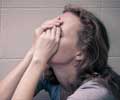Eastern China’s Zisiqiao village is hopeful that the start of the Year of the Snake will provide a boost to the prosperity of the village.

Scores of households now raise serpents, earning the settlement of more than 800 people the nickname "Snake Village" in Chinese media.
They include Gao Shuihua, 50, who began breeding snakes three decades ago instead of the traditional farming and raising fish.
"We were poor before. We didn't have anything else to do so we started raising snakes," he said.
The snake is not considered to be among the most adorable of Chinese zodiac animals -- which are based on the lunar year and not the calendar month -- but Gao said they provide food and medicine as well as his livelihood.
"Some people don't like to eat snake because they think it's weird. But every kind of snake has its own method of preparation," he said, adding he preferred his in soup, which makes the meat more tender.
Advertisement
His nephew praised the drink's benefits. "This is a tonic for building up health. It's especially good for men."
Advertisement
Upstairs in one of the bedrooms, the family keeps nine buckets of sharp-nosed vipers preserved in alcohol awaiting sale to traditional medicine factories, which pay 3 yuan (50 cents) apiece.
Snakes were worshipped by the earliest Chinese as a totem, with millennia-old stone carvings depicting Fuxi and Nuwa, the mythological ancestors of all Chinese, as half-human, half-snake.
And some historians also believe the dragon, regarded as China's national symbol and typically depicted with a long serpentine body, was based on images of snakes.
Huang Guangyu, 25, believes that medicines made from the creatures are highly effective.
He suffers from ankylosing spondylitis, or arthritis of the spine, and came to Zisiqiao from his home in the southern province of Guangxi after reading about the curative properties of snake.
Huang takes a daily cocktail made from several species. "It's not cheap," he said, but added: "I couldn't even walk last year."
He is a client of the Deqing Snake Culture Museum, opened by Zisiqiao's most successful businessman Yang Hongchang, which combines a treatment centre, tourist attraction and retailer.
Inside a specially heated room, hundreds of snakes dulled by winter hibernation rest in wooden boxes including the notorious "Five-Step Snake", so venomous that its victims are said to die within five paces of being bitten.
But such dangers are far from Yang's mind. "We wish for business success and happiness in the Year of the Snake," he said.
Source-AFP









